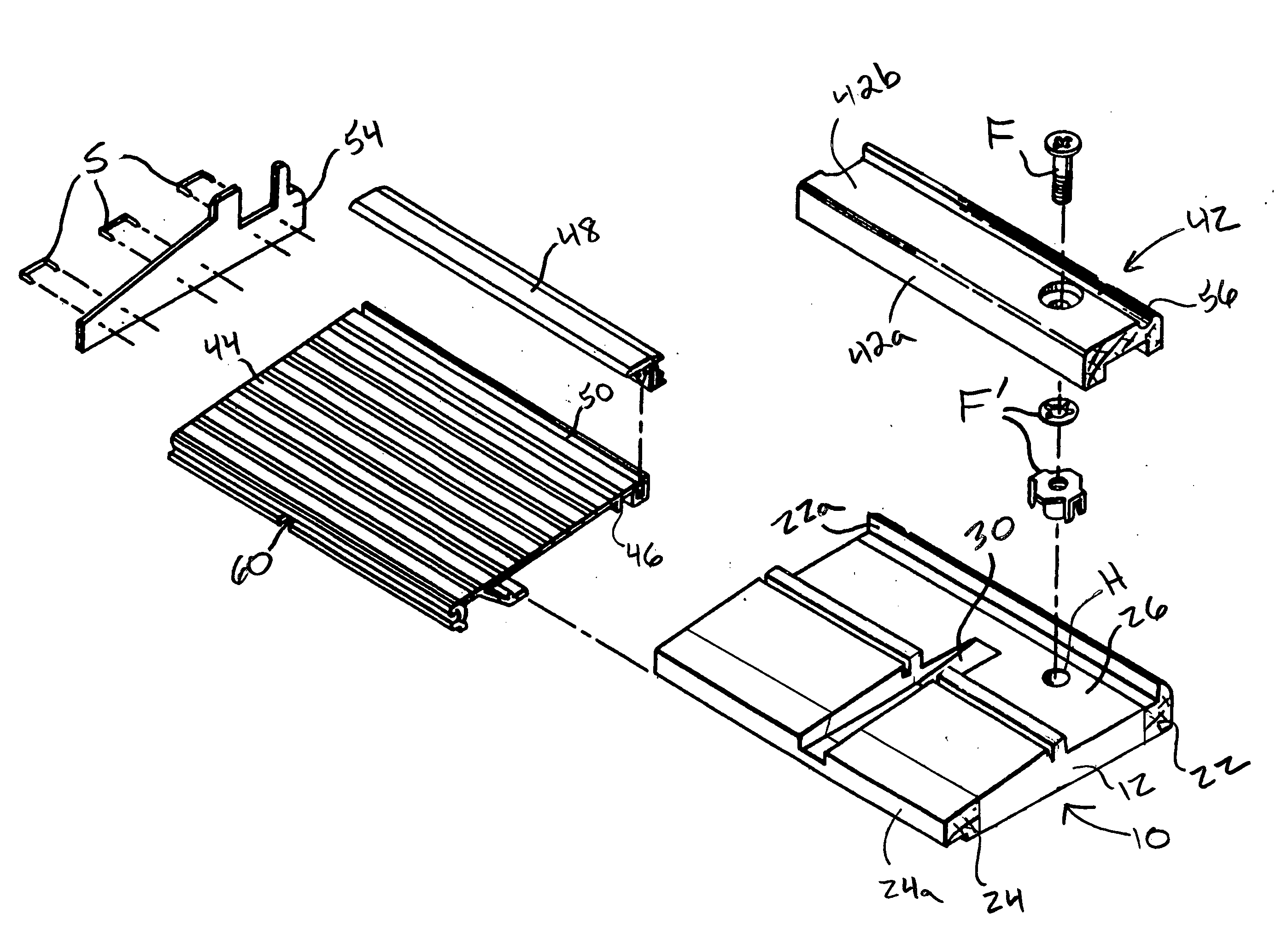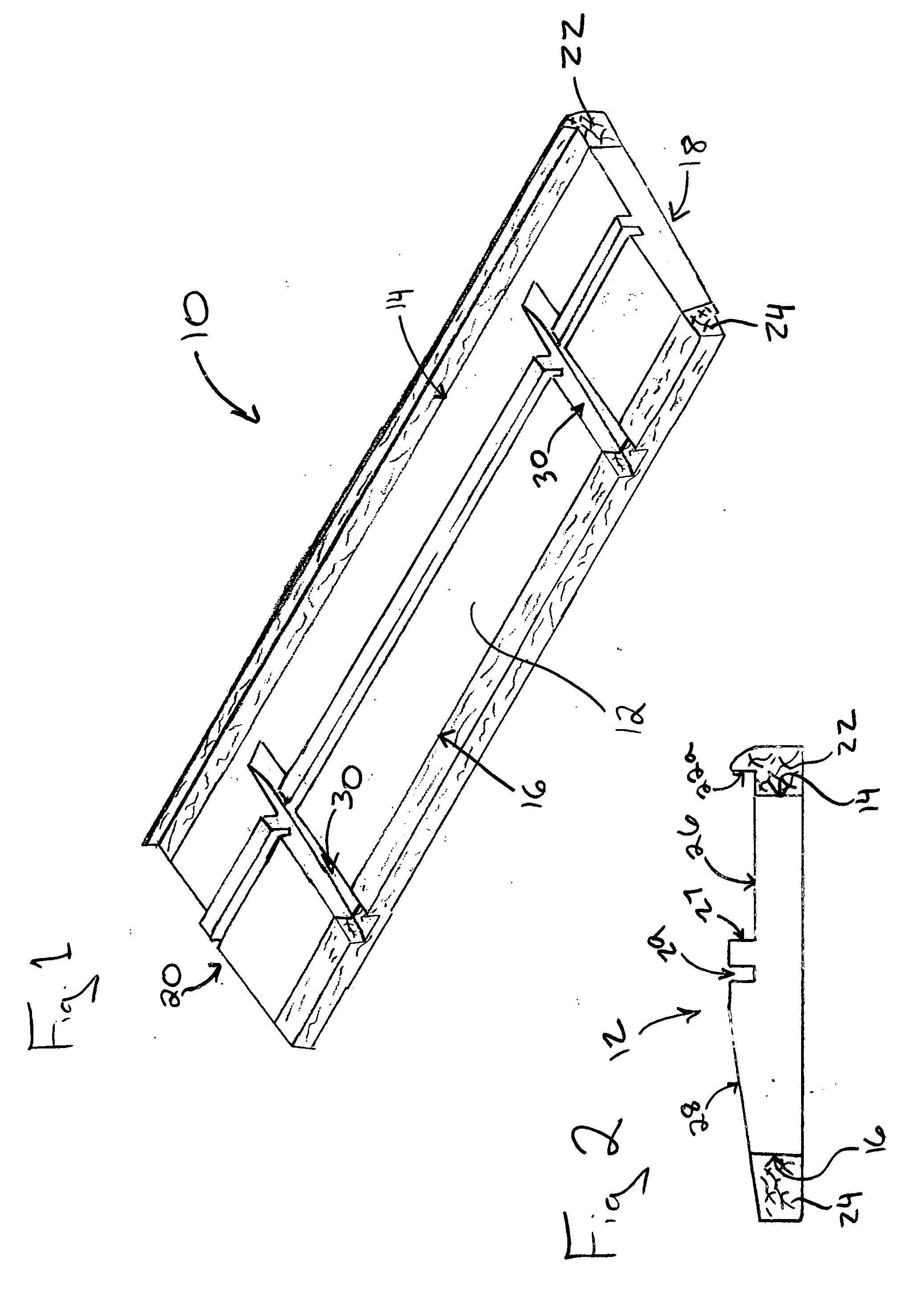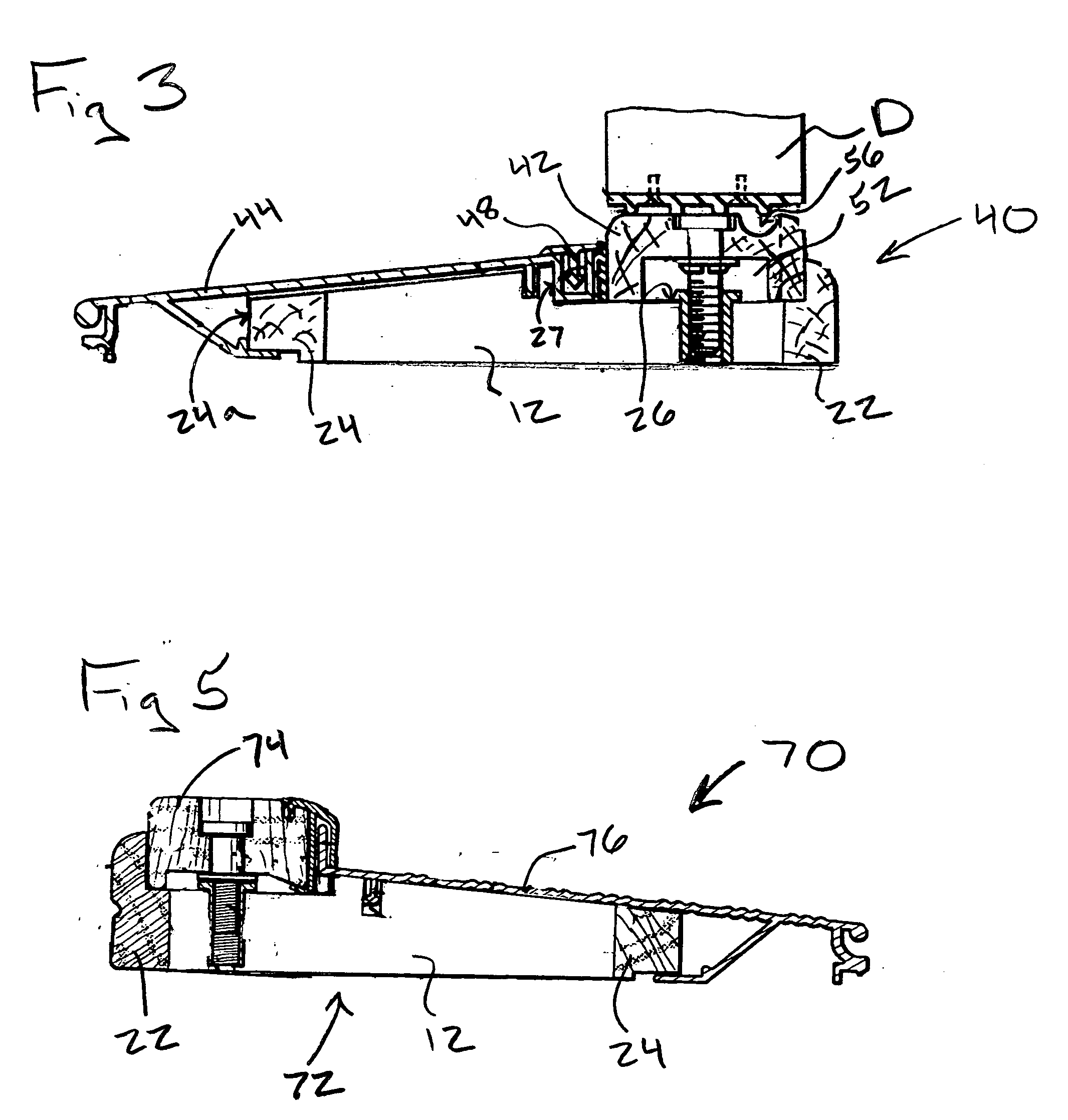Banded door sill base and door sill assembly, and method of forming same
a door sill and banded technology, applied in the direction of sills/thresholds, building components, constructions, etc., can solve the problems of poor fit between the base plate and the door frame, low thermal conductivity of wood, and high dimensional stability of wood, so as to prevent linear expansion of the central portion
- Summary
- Abstract
- Description
- Claims
- Application Information
AI Technical Summary
Benefits of technology
Problems solved by technology
Method used
Image
Examples
first embodiment
[0023] A doorsill assembly 40 according to the present invention is best shown in FIGS. 3 and 4. Assembly 40 includes an elongated threshold member 42 disposed over and adjustably connected to base 10. Assembly 40 also includes an elongated weather cover panel 44, preferably constructed of an aluminum alloy. Cover panel 44 is attached to base 10 so as to overlie and extend from an exteriorly disposed edge 24a of second strip 24 and interface wall 27. Cover panel 44 may include a rib 46 that is received in groove 29 of base 10. Cover panel 44 forms a foot tread. An elongated gasket 48, preferably a compressible, resilient vinyl gasket, is connected along an interior facing edge portion 50 of cover panel 44, and extends along a narrow gap between interface wall 29 and an exterior facing side 42a of threshold member 42 to inhibit seepage of water therethrough.
[0024] A series of conventional, adjustable fasteners F connect threshold member 42 to planar surface 26 of base. Accordingly, p...
second embodiment
[0027] a doorsill assembly 70 is best shown in FIGS. 5 and 6. Similar to assembly 40, assembly 70 includes a base 72, a threshold member 74, and a cover panel 76. Base 72 is nearly identical to base 10. Accordingly, base includes central portion 12 with first and second strips 22, 24 secured thereto.
[0028] Threshold member 74 is similar to threshold member 42, but does not include a storm drain channel. Cover panel 76 has a slightly different configuration compared to cover panel 44, and includes an upwardly extending, interiorly disposed wall 76a which cooperates with a weather strip gasket 78 to seal the gap between cover panel 76 and threshold member 74, such as the weather strip gasket described in U.S. Pat. No. 6,484,446 to Young, the disclosure of which is incorporated herein by reference.
[0029] While the disclosed banded doorsill base 10 has been described in terms of various embodiments, it should be understood that base 10 (or 72) may be used for any doorsill assembly. Acc...
PUM
 Login to View More
Login to View More Abstract
Description
Claims
Application Information
 Login to View More
Login to View More - R&D
- Intellectual Property
- Life Sciences
- Materials
- Tech Scout
- Unparalleled Data Quality
- Higher Quality Content
- 60% Fewer Hallucinations
Browse by: Latest US Patents, China's latest patents, Technical Efficacy Thesaurus, Application Domain, Technology Topic, Popular Technical Reports.
© 2025 PatSnap. All rights reserved.Legal|Privacy policy|Modern Slavery Act Transparency Statement|Sitemap|About US| Contact US: help@patsnap.com



